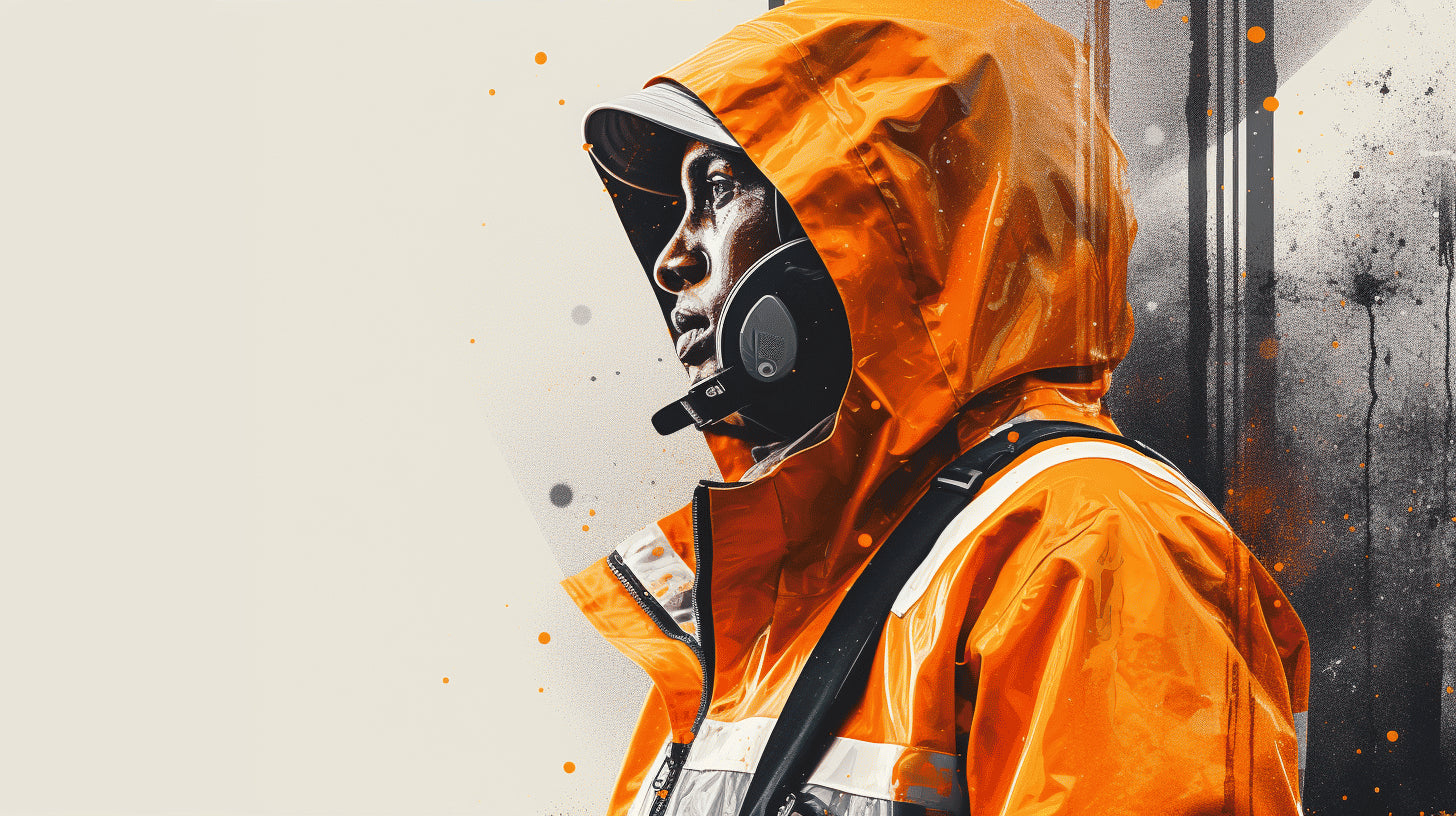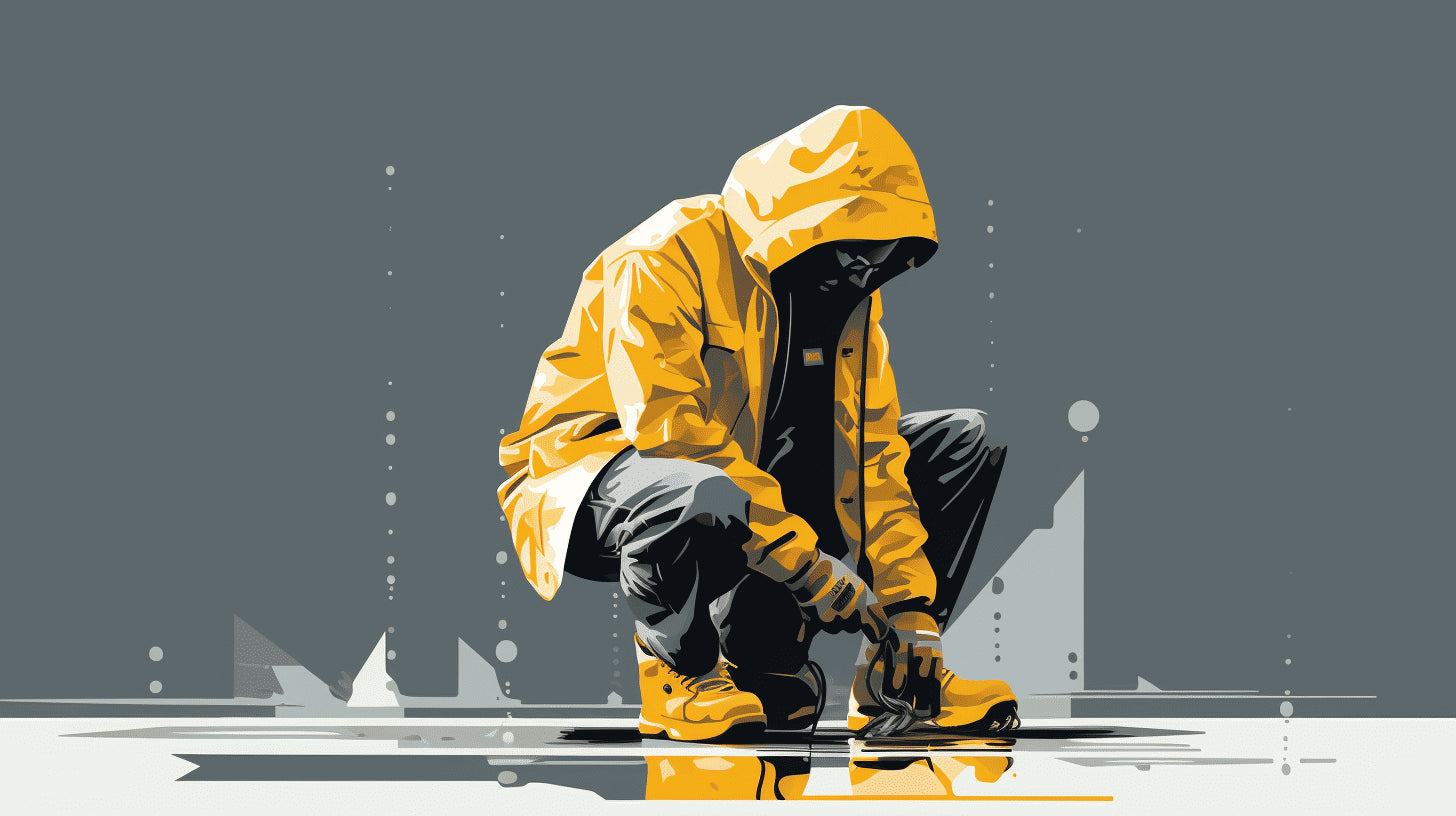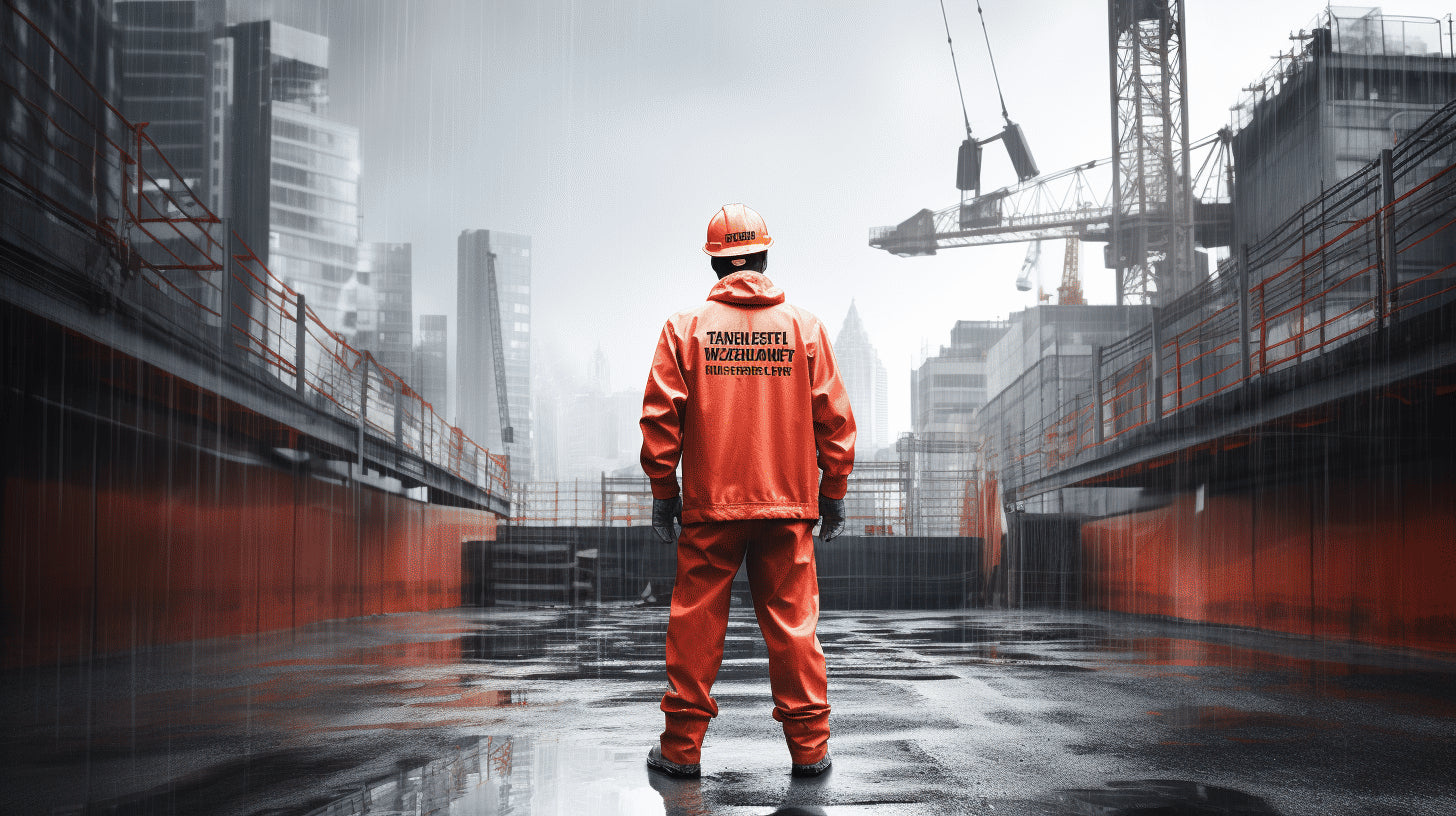In the realm of construction, the ability to weather the elements often determines the difference between a project's timeline staying on track or being derailed. Consequently, investing in high-quality, durable rain gear becomes essential for construction workers. These hardworking individuals are routinely exposed to varying weather conditions—sunshine, rain, wind, snow—that demand appropriate and effective attire. The aim of this article is to delve into the importance of long-lasting rain gear, how to choose durable articles, and their cost-effectiveness. We will also shed light on their role in accident prevention and health protection, as well as go over some care and maintenance tips to ensure the longevity of your rain gear. This discussion is intricately woven to provide a comprehensive understanding of why investing in long-lasting rain gear is a wise choice for any construction worker.
Importance of Rain Gear for Construction Workers
With the advent of climate change, unexpected showers can be a constant hurdle for construction workers. Rain, while beloved by poets and farmers, poses unique challenges for those navigating physically demanding tasks on construction sites. Incorporating suitable rain gear into their work attire can prove to be a game-changer. But what makes rain gear so crucial for construction workers? The answer lies in understanding its impact on protection against weather elements, enhanced work efficiency, and employee safety and health protection.
Protection Against Weather Elements
Firstly, the primary reason of favouring rain gear is the protection it offers against the vagaries of weather, predominantly, heavy rain. Traditional construction attire might falter under the onslaught of showers, leading to soaked clothes and a drenched worker. This is where rain gear steps in.
- Waterproof Material: The foundational benefit of rain gear is its water-resistant fabric that shrugs off water molecules, keeping the wearer dry. Whether it's a sudden downpour or a prolonged rainy day, quality rain gear withstands it all.
- Insulation: Many rain gears are designed with thermal insulation properties. This proves essential when the temperature drops and winds get chilly. It helps maintain the body temperature of the construction worker, fostering a comfortable working environment.
Enhanced Work Efficiency
The next solid rationale backing the use of rain gear in construction work relates to work efficiency. It's an irrefutable fact that comfortable workers are more productive.
- Dryness Equals Comfort: The sense of remaining dry in a downpour can significantly uplift a worker's spirits, leading to improved morale and enhanced productivity.
- Less Frequent Breaks: With good rain gear, workers need less time-off the site to change or dry their clothes, thus, reducing work interruption and boosting efficiency.
Employee Safety and Health Protection
More than just comfort, the utility of rain gear gravitates towards the crucial zone of employee safety and health. Here's how:
- Decreased Risk of Illness: Staying dry during harsh weather conditions reduces the probability of catching a common cold or more serious health implications like pneumonia, ensuring good health and fewer leave days.
- Enhanced Visibility: High-visibility rain gear can serve as lifesaver on stormy days. It increases worker visibility, thereby reducing the chances of accidents on site.
All in all, the importance of rain gear for construction workers can hardly be overstated. It is crucial for their comfort, productivity, and overall safety. So, the next time a cloud-laden sky threatens your construction site, remember—it's not just drops of water falling from the sky. It's a call for reinforcing the importance of adequate rain gear, to protect workers from the relentless pursuit of weather elements, and ensure consistent efficiency and safety.
Choosing Long-lasting Rain Gear
There's nothing worse than getting caught in a downpour, only to find out your rain gear isn’t up to the task. This article will guide you in choosing long-lasting rain gear that will keep you dry, no matter the size of the storm. We will delve into the importance of material durability, waterproof and breathability features, comfort, and fit.
Material Durability
The material of your rain gear is crucial.
- Choose materials that are tough and resistant, capable of withstanding harsh weather conditions, abrasions, and tears.
- Often used materials include Nylon and Polyester. These synthetic materials, fashioned into hard-wearing fabrics like Ripstop or Taslan, provide ample durability.
- The outer layer of rain gear is usually treated with a Durable Water Repellent (DWR) to make it water-resistant. However, over time and through continuous use, the DWR coating may wear off potentially leaving you a soggy mess. Remember to renew the water-repellent layer when needed.
Waterproof and Breathability Features
Equally important, the waterproof and breathability features need your attention.
- A 100% waterproof feature is highly recommended. Outdoorsy types might understand the need for the term 'breathable'. Well, you'd ask, why does my rain gear need to be breathable? This nifty feature allows moisture (perspiration) from your body to escape, providing you with overall better comfort.
- Rain gear, featuring technologies such as Gore-Tex, provides an optimal balance of waterproofness and breathability. These high-tech layers let body moisture out, while not allowing rainwater in.
Comfort and Fit
Let's talk about comfort and fit.
- It's essential that your rain gear fits well. It should be roomy enough to accommodate layers underneath while not being too baggy, as that can restrict movement.
- Look for styles that have adjustable cuffs, hoods, and hems for a more personalized fit.
- Be aware of the weight. Lightweight gear is easier to carry and less of a burden when spending extended time outside.
Ultimately, balancing durability, waterproofness, breathability, comfort, and fit will lead you to the ideal long-lasting rain gear. Keep these factors in mind as you navigate your choices and face even the stormiest of days with confidence.
Cost-effectiveness of Long-lasting Rain Gear
Our world has no shortage of surprises; one minute, you're in sunny weather, and the next, you're drenched in an unexpected rain shower. Rain gear is our first line of defense against such unpredictable weather changes. But not all rain gear is created equal. Some may fall apart after a few uses, leading you on a never-ending purchasing cycle. Others, however, may be more expensive initially, but their durability can stand the test of time and weather, hence providing value for money in the long run. Here, we delve into the cost-effectiveness of investing in long-lasting rain gear.
Less Frequent Replacement
When it comes to purchasing rain gear, longevity should be a prime consideration. While it might be tempting to choose the cheaper option initially, we often overlook the cumulative cost incurred from continuous replacements.
In contrast, long-lasting rain gear:
- Requires less frequent replacement, saving money over time
- Offers resilience against harsh weather conditions
- Provides consistent protection, so you're never caught off-guard
- Demonstrates superior material quality and build, ensuring endurance
For the financially savvy, it's clear to see that the value derived from durable, long-lasting rain gear far outweighs the initial cost.
Increased Work Productivity
Apart from financial benefits, owning long-lasting rain gear brings substantial productivity gains, especially for outdoor workers. Durable gear allows these workers to function unhindered in adverse weather, resulting in:
- Less time wasted in gear repair or replacement
- Consistent work flow even in inclement weather
- Lower risk of work-related injuries
- Enhanced comfort leading to increased worker efficiency
As the old saying goes, "Time is money." The less time wasted, the more productive and cost-effective the operations. However, remember that the highest-priced gear doesn't always mean the most durable - it's crucial to research and find gear that combines quality, durability, and affordability. It's a worthwhile investment, considering the savings, convenience, and efficiency it delivers.
Long-lasting rain gear isn’t just about savings in your pocket; it’s about making daily life, work, and unexpected weather changes more manageable. Cost-effective, durable rain gear is a wise investment for your wardrobe, finances, and overall productivity.
To sum up, weighing the cost against the expected lifetime of the product, longevity wins every time. Therefore, it might be time you consider upgrading your rain gear to something that's designed to last.
Preventing Accidents & Health Complications
Navigating life's challenges almost always involves the risk of accidents and health complications. From minor slips and falls at home to more severe health risks like hypothermia, prevention is always the best approach. Building habits that prioritize safety and wellbeing not only curbs these risks but enhances overall quality of life.
Prevention of Slips, Trips, and Falls
Slips, trips, and falls are commonplace, yet they can result in severe injuries, especially nearing later stages of life.
Adopt these smart hacks to help prevent these accidents:
- Stay Active: Regular exercise can improve strength, balance, coordination, and flexibility, reducing the risk of falls.
- Clear Up the Clutter: Keep all hallways, staircases, and high-traffic areas clear of misplaced items and obstruction to ensure safe walking spaces.
- Invest in Non-Slip Mats: Using non-slip mats in the bathroom, kitchen, or on hardwood floors can provide additional safety.
- Good Lighting: Adequate lighting in all spaces, specifically near stairs, hallways, and entrances, can significantly reduce the risk of trips and falls.
"An ounce of prevention is worth a pound of cure" - Benjamin Franklin.
Protection Against Hypothermia
In colder climates, the threat of hypothermia is ever-present. Hypothermia occurs when the body loses heat faster than it can produce, causing a dangerously low body temperature.
Consider these precautions to stay warm and prevent hypothermia:
- Dress in Layers: Wearing multiple layers of loose clothing traps body heat more effectively than a single, heavy garment.
- Weatherproof Your Home: Insulate homes well, especially around windows and doors, to prevent cold drafts from seeping in.
- Eat Well and Stay Hydrated: Consuming warm foods and liquids can help maintain body temperature, as can staying hydrated.
- Avoid Alcohol: Alcohol can impair the body's response to cold and dampen shivering, a critical heat energy-producing mechanism in cold weather.
Ensuring the betterment of our health by preventing accidents and health complications is critical. By incorporating a few simple habits into our daily routines, we can significantly reduce the risks associated with slips, trips, and falls, and conditions like hypothermia. Prevention, indeed, is better than cure.
Care and Maintenance for Longevity of Rain Gear
Walking under a downpour can be a mesmerizing experience provided you're armed with the right rain gear. However, to ensure prolonged use and performance, this rain gear needs regular care and maintenance. Just like a car, if it's not serviced on time, it may not run properly when you need it the most. Let's dive into the two fundamental aspects of rain gear care - regular cleaning and proper storage.
Regular Cleaning
Cleaning rain gear might seem like a counter-intuitive act. "Why do I need to wash something that gets doused in rain regularly?" you may ask. Well, dirt, body oils, and other elements can hinder the waterproofing properties of your rain gear. Regularly cleaning it helps to keep these pesky issues at bay.
Consider these cleaning tips for your rain gear:
- Prefer hand washing over machine wash. Although some rain gear is machine washable, hands prove to be gentler on the material.
- Use a mild detergent or a cleaner designed specifically for waterproof fabrics. This way, the waterproof properties won't be compromised.
- Rinse thoroughly. Any residual detergent might affect the water-repellent finish of the rain gear.
- Air dry or tumble dry low (if the care instructions on the gear allows). Direct sunlight or excessive heat can damage its material.
Remember: Always follow the manufacturer's instructions for cleaning.
Proper Storage
After cleaning your rain gear, you would want to store it in a manner that doesn’t harm its waterproofing abilities, right? Correct storage ensures it serves you as promised when you need it next time.
Consider these storage tips for longevity of your rain gear:
- Store it fully dried. If it's stored wet or damp, it can develop mildew.
- Keep it in a cool, dry place. Excessive heat can cause the waterproof membrane to deteriorate.
- Avoid crumpling or stuffing it. This leads to creases and possible wear and tear.
- Hang it up or lay it flat. This maintains its shape and usefulness.
Your rain gear is your most trusted companion during a downpour. With regular cleaning and proper storage, you can significantly increase its longevity. This doesn't only save you money but also ensures you stay dry, keeping your rain walks dreamy and droplet free.
So, prepare those rain gears for the next rain dance with care that keeps them ticking for many seasons to come!
Conclusion
Equipping oneself with robust and durable rain gear isn't just about weather protection; it's an investment that directly influences work efficiency, safety, and overall productivity, especially for construction workers working in challenging climate conditions. Hurricane Raingear's products, designed with both comfort and functionality in mind, serve as an excellent example of long-lasting rain protection.
Whether you go for the value of less frequent replacements, painstakingly handcrafted quality, or increased work productivity, investing in top-quality rain gear from Hurricane Raingear is undoubtedly a wise decision. The added advantage of preventing job-site accidents and health complications makes this an even more compelling choice.
In the end, choosing and caring for your rain gear is just as crucial on the construction site as the proper use of any other work tool. Therefore, proper maintenance routines and storage habits act as part and parcel of this investment's value proposition, promoting lasting product durability.
So, make the switch today and arm yourself with the best-in-class, durable, and comfortable gear to make your work days on the construction site more productive and safer.
Frequently Asked Questions
-
Why is long-lasting rain gear important for construction workers?
Long-lasting rain gear is important for construction workers because it provides protection from the elements, allowing them to work comfortably and efficiently even in rainy conditions. It helps prevent moisture penetration, keeps workers dry, and reduces the risk of hypothermia or illness.
-
What features should I look for in long-lasting rain gear for construction workers?
When choosing rain gear for construction workers, look for features such as waterproof and breathable materials, taped seams, adjustable cuffs and hoods, reinforced knee and seat areas, and reflective strips for visibility. These features ensure durability, comfort, and safety.
-
How does investing in long-lasting rain gear benefit construction workers?
Investing in long-lasting rain gear benefits construction workers by providing long-term cost savings. Durable rain gear lasts longer, reducing the need for frequent replacements. It also enhances worker productivity and morale, as they can work comfortably in any weather condition.
-
Can long-lasting rain gear be used for other outdoor activities besides construction work?
Yes, long-lasting rain gear can be used for various outdoor activities besides construction work. It is suitable for hiking, camping, fishing, and any other activity that requires protection from rain. Its durability and functionality make it a versatile investment.
-
How do I care for and maintain long-lasting rain gear?
To care for and maintain long-lasting rain gear, follow the manufacturer's instructions. Generally, this involves washing it with mild detergent, avoiding fabric softeners, and drying it properly. Regularly inspect and repair any damages to ensure the continued effectiveness of the rain gear.























Leave a comment
This site is protected by hCaptcha and the hCaptcha Privacy Policy and Terms of Service apply.